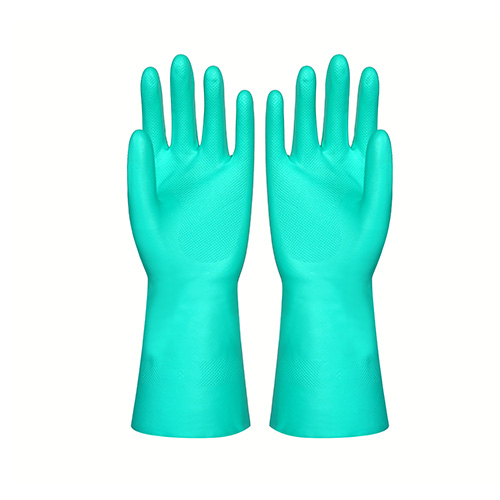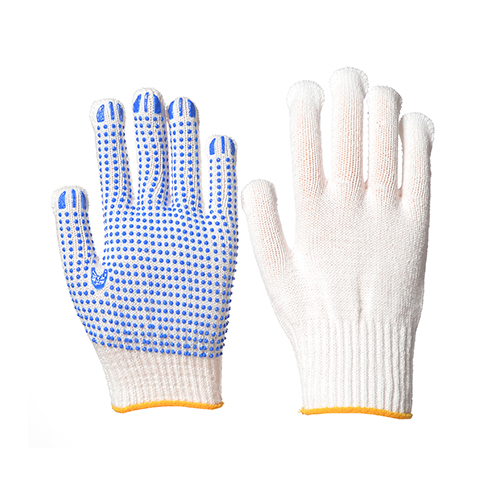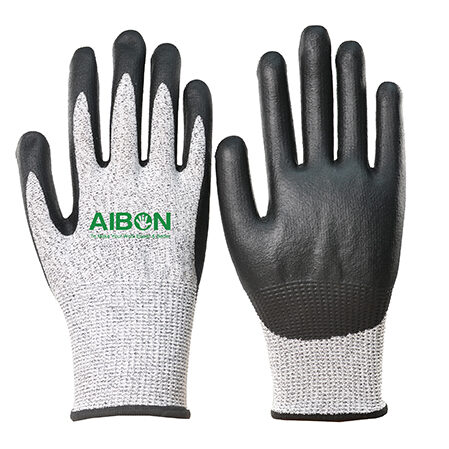 The most effective and reliable way to prevent skin problems on your hands is to avoid contact with harmful substances. Therefore, choosing the right gloves is one of the essential considerations.
The most effective and reliable way to prevent skin problems on your hands is to avoid contact with harmful substances. Therefore, choosing the right gloves is one of the essential considerations.
First, when selecting gloves, you should base your decision on the work, the wearer, and the work environment. You need to consider the following factors:
- Glove material
- The environment in which the gloves will be used
- The size and fit of the gloves
- Glove standards and certifications
Next, we will explain each of these factors to help you understand everything more quickly.
Glove Materials
You need to know some basic information about gloves, such as the types and materials, to choose the right gloves for your needs.
Gloves can be categorized in many ways. Typically, they are classified by material into the following types:
Latex Gloves
Latex gloves are usually made from natural rubber. They have good elasticity, flexibility, and grip, and are commonly used in medical, laboratory, food handling, and household cleaning fields. They effectively protect against wind, water, bacteria, and some microorganisms. However, latex gloves can cause allergic reactions, so if you are allergic to latex, it is recommended not to choose latex gloves.

Nitrile Gloves
Nitrile gloves are made from synthetic nitrile rubber. Compared to latex gloves, they have better abrasion resistance and chemical resistance. They are commonly used in medical and laboratory settings, food handling, chemical and manufacturing industries. Although they are slightly less flexible than latex gloves, they do not cause strong allergic reactions like latex, making them a good option for those with allergies.

Cotton/Textile Gloves
Cotton/textile gloves are usually made from cotton, yarn, or other textile materials. They provide warmth, have good breathability and comfort, and offer light protection. They can be used alone or dipped in a layer of rubber (either natural or synthetic) for additional protection.

Cut-resistant Gloves
Cut-resistant gloves are typically made from high-performance materials such as HPPE, Kevlar, stainless steel wire, and glass fiber. They offer excellent cut resistance and durability, making them suitable for industries such as metal processing and glass manufacturing.

Glove Usage Environment
The environment in which gloves are used is very important. You need to choose gloves based on the specific scenarios they will be used in. No glove is suitable for all scenarios, nor is any glove designed for permanent use in a given scenario.
You need to determine how the substances you will come into contact with will affect the gloves, or what hazards the gloves need to prevent to protect your hands. For example, in high-temperature environments, heat-resistant gloves are necessary to help you complete your tasks. In environments where you need to handle acids, alkalis, or other chemicals, specially designed-chemical-resistant gloves are required to protect your hands.
Note that some dangerous substances can harm your skin or body, so it is crucial to choose gloves with caution.
Glove Size and Comfort
Gloves should fit the wearer properly—not too large or too small, not too long or too short. Oversized gloves can create folds, affecting work and causing discomfort.
Comfortable gloves enhance the wearing experience. If your hands sweat inside the gloves, they will be very uncomfortable to wear. Therefore, choose gloves that help your hands breathe to increase comfort.
Glove Standards and Certifications
Standards and certifications are critical for ensuring the quality and protective performance of gloves. Here are some international standards for gloves:
- EN 388: Primarily for gloves that protect against mechanical risks such as cutting, piercing, tearing, and abrasion. Gloves will be marked with four numbers, each representing a performance level ranging from 1 to 5 (or 6), with higher numbers indicating better protection.
- EN 374: Primarily for gloves that protect against chemicals and microorganisms. Certifications will indicate the chemical breakthrough time (Class A, B, or C) and protection type (e.g., chemical symbols and numbers), with Class A being the highest protection level.
- ANSI/ISEA 105: Measures gloves’ resistance to cutting, piercing, and abrasion. Performance levels are marked for cut resistance (A1 to A9) and for puncture and abrasion resistance (1 to 5).
- FDA: Ensures that medical and food handling gloves meet hygiene and safety standards. Gloves certified by the FDA will be marked accordingly, with specific application grades such as medical grade or food grade.
- CE Certification: Used for gloves sold in the EU market, ensuring they meet EU safety, health, and environmental requirements. CE-certified gloves will bear the CE mark.
- ISO 9001: Ensures that the glove production process meets international quality management standards, ensuring stable product quality that meets customer needs.
Summarize
Based on the above factors and conditions, and combined with your own needs, you can choose the gloves that are most suitable for you. If you are still unsure how to choose the right gloves or if you have already selected your ideal gloves for purchase, please contact us promptly.
How to Measure Glove Sizes – Source: AIBON
Latex gloves– Source: AIBON
Safety gloves– Source: AIBON
Working gloves– Source: AIBON

